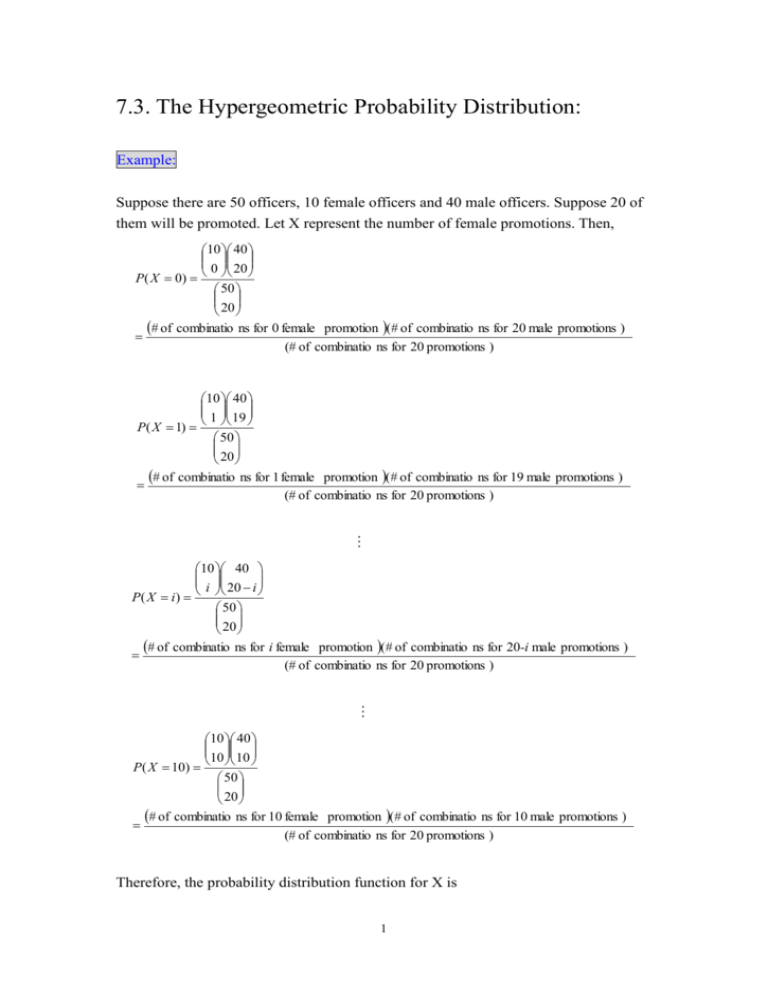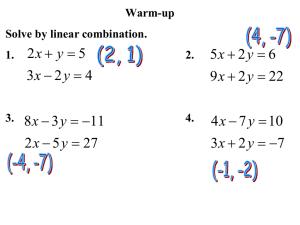7.3 Hypergeometric distribution
advertisement

7.3. The Hypergeometric Probability Distribution: Example: Suppose there are 50 officers, 10 female officers and 40 male officers. Suppose 20 of them will be promoted. Let X represent the number of female promotions. Then, 10 40 0 20 P( X 0) 50 20 # of combinatio ns for 0 female 10 40 1 19 P( X 1) 50 20 promotion (# of combinatio ns for 20 male promotions ) (# of combinatio ns for 20 promotions ) # of combinatio ns for 1 female promotion (# of combinatio ns for 19 male promotions ) (# of combinatio ns for 20 promotions ) 10 40 i 20 i P( X i) 50 20 # of combinatio ns for i female promotion (# of combinatio ns for 20-i male promotions ) (# of combinatio ns for 20 promotions ) 10 40 10 10 P( X 10) 50 20 # of combinatio ns for 10 female promotion (# of combinatio ns for 10 male promotions ) (# of combinatio ns for 20 promotions ) Therefore, the probability distribution function for X is 1 10 40 i 20 i P( X i ) , i 0,1, ,10. 50 20 Hypergeometric Probability Distribution: There are N elements in the population, r elements in group 1 and the other N-r elements in group 2. Suppose we select n elements from the two groups and the random variable X represent the number of elements selected from group 1. Then, the probability distribution function for X is r N r i ni P( X i ) f x (i ) , 0 i r. N n r is the number of combinations as selecting i elements i N r is the number of combinations as from group 1 while ni Note: N selecting n-i elements from group2. is the total number of n combinations as selecting n elements from the two groups while r N r is the total number of combinations as selecting i and n-i i n i elements from groups 1 and 2, respectively. How to obtain the hypergeometric probability distribution: (a) Using table of Poisson distribution. (b) Using computer by some software, for example, Excel or Minitab. 2 Online Exercise: Exercise 7.3.1 3










